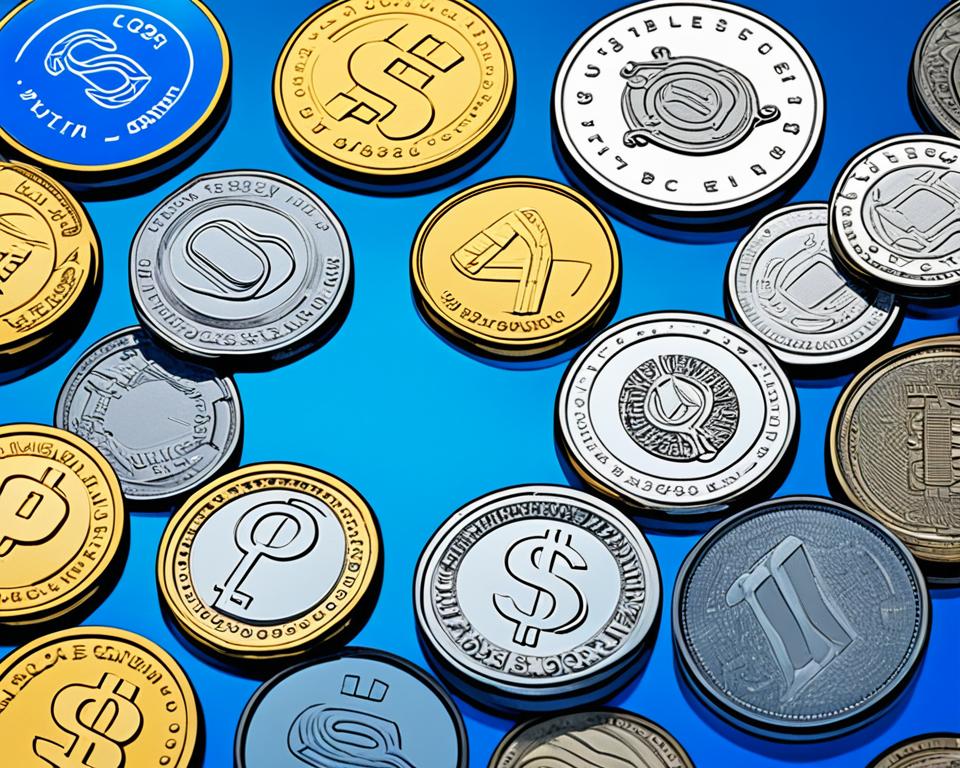Best Stablecoins: A Guide to Secure Digital Currencies

Welcome to your comprehensive guide on the best stablecoins – secure digital currencies backed by reserves. Navigating the world of cryptocurrency and decentralized finance (DeFi) can be daunting, but stablecoins offer a bridge between the volatile crypto markets and the stability of the traditional financial system.
Stablecoins are designed to maintain a stable value, often pegged to traditional fiat currencies like the US dollar. This makes them an attractive option for those seeking to store value, conduct transactions, or participate in DeFi activities while mitigating the risks associated with the price fluctuations of other digital assets.
In this comprehensive guide, we’ll explore the best stablecoins, delving into their features, benefits, and how they can fit into your investment portfolio or cryptocurrency transactions. Whether you’re new to the world of blockchain and tokenization, or a seasoned crypto enthusiast, this guide will provide you with the insights you need to make informed decisions about the secure digital currencies available to you.
Key Takeaways
- Stablecoins are digital currencies designed to maintain a stable value, often pegged to traditional fiat currencies like the US dollar.
- Stablecoins offer a bridge between the volatile crypto markets and the stability of the traditional financial system, making them attractive for storing value, conducting transactions, and participating in DeFi activities.
- Understanding the different types of stablecoins and their underlying mechanisms is crucial for making informed decisions about which ones to use.
- The top stablecoins to consider include Tether (USDT), USD Coin (USDC), Binance USD (BUSD), and Dai (DAI), each with its own unique features and use cases.
- Researching the reserve assets, regulatory compliance, and overall transparency of stablecoins is essential to ensure the security and stability of your digital currency holdings.
Understanding Stablecoins
In the dynamic world of cryptocurrency and decentralized finance (DeFi), stablecoins have emerged as a crucial bridge between the volatility of digital assets and the stability of traditional financial systems. These innovative digital assets are designed to maintain a consistent value, often pegged to fiat currencies like the US dollar, providing users with a reliable store of value and a means of transacting without the price fluctuations commonly associated with other cryptocurrencies.
What are Stablecoins?
Stablecoins are a type of cryptocurrency that are backed by reserve assets, such as fiat currencies, commodities, or even other digital assets. This backing mechanism is what helps stablecoins maintain a stable price, mitigating the extreme price volatility that can be observed in other blockchain-based digital assets. By providing a stable and reliable means of storing and transferring value, stablecoins have become an integral part of the decentralized finance ecosystem, enabling seamless transactions, lending, borrowing, and other DeFi applications.
Types of Stablecoins
The stablecoin landscape is diverse, with various types of stablecoins catering to different needs and use cases. Some of the common types of stablecoins include:
- Fiat-collateralized stablecoins: These stablecoins are backed by traditional fiat currencies, such as the US dollar, and are pegged to their value on a 1:1 basis.
- Crypto-collateralized stablecoins: These stablecoins are collateralized by other cryptocurrencies or digital assets, often over-collateralized to mitigate price volatility.
- Algorithmic stablecoins: These stablecoins use smart contracts and algorithms to maintain price stability, without the need for traditional collateral or reserves.
Benefits of Stablecoins
Stablecoins offer a range of benefits that make them an attractive option for both individual and institutional investors, as well as those participating in the decentralized finance ecosystem:
- Price Stability: Stablecoins provide a stable store of value, minimizing the volatility associated with other cryptocurrencies and allowing for more predictable transactions and financial planning.
- Liquidity: The price stability of stablecoins makes them highly liquid, enabling seamless conversions between digital assets and fiat currencies, as well as facilitating decentralized finance activities like lending, borrowing, and trading.
- Accessibility: Stablecoins offer a more accessible entry point into the cryptocurrency and decentralized finance ecosystems, as they provide a familiar and stable unit of account for both crypto-savvy and traditional finance users.
- Transparency: Many stablecoin projects maintain high levels of transparency, providing regular audits and disclosures about their reserve assets and smart contract operations, enhancing user trust and confidence.
As the blockchain and decentralized finance landscapes continue to evolve, stablecoins have become an integral component, serving as a stable foundation for various financial applications and transactions. Their unique blend of price stability, liquidity, and accessibility has made them a valuable asset for both seasoned cryptocurrency users and those new to the world of digital assets.

Top Stablecoins to Consider
As you navigate the dynamic world of cryptocurrency, it’s important to consider the role of stablecoins in your investment portfolio or transactional needs. Stablecoins are designed to maintain a stable value, often pegged to traditional fiat currencies like the US dollar, offering a bridge between the volatile crypto markets and the stability of the traditional financial system. Let’s explore some of the top stablecoins that are worth your attention.
Tether (USDT)
Tether (USDT) is one of the most widely used and recognized stablecoins in the cryptocurrency market. Backed by fiat currency reserves, Tether aims to provide a stable and accessible option for traders, investors, and businesses operating in the decentralized finance (DeFi) ecosystem. Its large market capitalization and wide acceptance across various cryptocurrency exchanges make Tether a popular choice for liquidity and price stability.
USD Coin (USDC)
USD Coin (USDC) is a stablecoin developed by the Centre Consortium, a partnership between Circle and Coinbase. USDC is fully backed by reserve assets and regularly audited to ensure transparency and accountability. Known for its reliability and regulatory compliance, USDC has gained significant traction as a go-to stablecoin for cryptocurrency transactions and DeFi protocols.
Binance USD (BUSD)
Binance USD (BUSD) is a stablecoin issued by the leading cryptocurrency exchange, Binance, in partnership with the New York-based financial services company, Paxos. BUSD is designed to provide a stable and secure option for cryptocurrency trading and DeFi applications on the Binance platform. With its strong backing and integration within the Binance ecosystem, BUSD has become a prominent stablecoin choice for users of the exchange.
Dai (DAI)
Dai (DAI) is a stablecoin created by the Maker Protocol, a decentralized autonomous organization (DAO) built on the Ethereum blockchain. Unlike other stablecoins, Dai is a collateral-backed cryptocurrency, meaning it is backed by a diversified portfolio of cryptocurrencies held in the Maker Protocol’s reserves. Dai’s unique design and focus on decentralization have made it a popular choice for DeFi applications and users seeking a transparent and autonomous stablecoin option.




